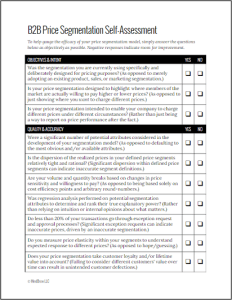You know that B2B customers don’t have a single, set level of price sensitivity. Their willingness-to-pay can vary tremendously depending on the specific circumstances of the deal at-hand.
That’s why you want to build your price segmentation model around the deal circumstances that lead to higher or lower pricing outcomes—i.e. the various combinations of customer, product, and order attributes.
But how do you figure out which attributes to use? Where do you even start?
To help determine which customer, product, and order attributes really matter, it’s a good idea to leverage your sales reps—particularly those that have been selling in your space for a long time.
While they may not be totally aware of it, they’ve probably internalized some attributes that give them an indication about the customer’s willingness-to-pay on any given deal.
They’ll know—or at least suspect—that when they see certain types of customers, looking for certain types of products, that they can likely charge a higher price and still win the business. They’ll also have a pretty good idea about where and when they can expect to get a pricing beat-down.
So ask them. Get them in a room and just ask them, “How do you know when you can charge a higher price, or when need to charge a lower price?” “What are the telltale signs?” “What do the deals look like?”
They’ll probably be able to give you a pretty good list of possibilities.
But don’t make the mistake of just running with the anecdotes and internal opinions. They’re a great starting point. And some of them may even be spot-on. But while using tribal knowledge may be better than nothing, it’s not nearly as good as using science—statistics—to test and validate the various price segmentation attributes you might be considering.
So, tap into your team’s experience to form a solid hypothesis. Then, use science to test that hypothesis.















